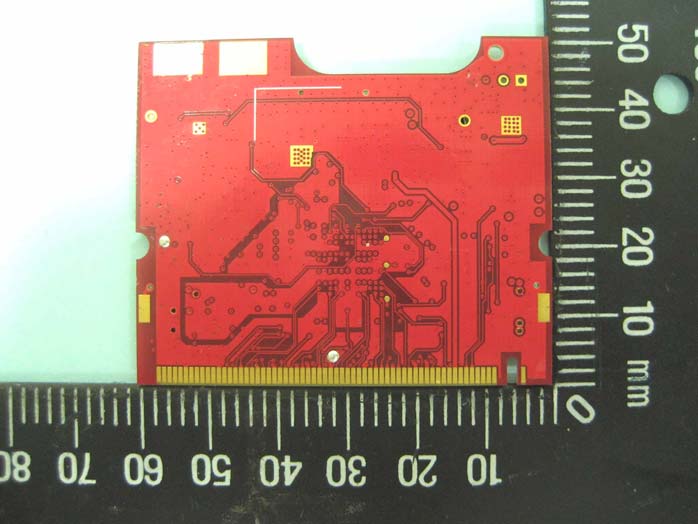
Click to zoom
Application Details
- Equipment Class
- DSS - Part 15 Spread Spectrum Transmitter
- Date of Grant
- Sep 11, 2007
- Application Purpose
- Original Equipment
- Date of Application
- Sep 11, 2007
- Equipment Note
- central of an alarm system
- Frequency Range
- 904.37800000 - 926.22000000
- Company
- RSIAlarm
- Country
- France
Documents & Files
Select a file to view
Users Manual
Cover Letter(s)
External Photos
ID Label/Location Info
Internal Photos
Test Report
Test Setup Photos
Document Text Content (7 documents)
Cover Letter(s)
ASTRO ® XTL™ 1500 Digital Mobile Radio with Control Head Quick Reference CardProduct Safety and RF Exposure Compliance ATTENTION! This radio is restricted to occupational use only to satisfy FCC RF energy exposure requirements. Before using this product, read the RF energy awareness information and operating instructions in the Product Safety and RF Exposure booklet enclosed wit h your radio (Motorola Publication part number 6881095C99) to ensure compliance with RF energy exposure limits. BASIC OPERATIONTurning the Radio On and OffSelecting the Zone and ModeMonitoring Conventional ModesCancelling MonitoringReceivingTransmitting (Conventional Modes) Transmitting (Trunked Systems) LED INDICATIONS Before using this product, read the operating instructions for safe usage contained in the Product Safety and RF Exposure booklet enclosed with your radio. ! C a u t i o n Mode Knob Programmable Button (T1) 4 Soft Menu Keys LED Indicators Speaker LCD Display Volume / Power Knob GCAI Rotate the Volume knob clockwise to turn it on. When the radio is powered on, the display shows XTL 1500 . You will hear a high-pitched (good power-up) tone.If your radio shows an error on power-up, contact your system manager for assistance. 1 Press the ZNUP softkey or ZNDN softkey to scroll to the desired zone. 2 Press CHAN and rotate the Mode knob to select the mode. Press the preprogrammed Monitor button. The display shows MON ON . Press the preprogrammed Monitor button. The display shows MON OFF . 1 Select the desired zone and mode.2 Turn the Volume knob to adjust the volume. 1 Select the desired zone and mode.2 Rotate the Volume knob to adjust the volume. 3 When a mode becomes available, press and hold the PTT button to transmit; release the PTT button to receive. 1 Select the desired zone and mode.2 Rotate the Volume knob to adjust the volume. 3 Press and hold the PTT button to transmit; release the PTT button to receive. Action LED Condition Meaning Press the PTT button to transmit Steady ...
External Photos
English Product Safety and RF Energy Exposure Booklet for Mobile Two-Way Radios Installed in Vehicles or as Fixed Site Control Stations ATTENTION! The information provided in this document supersedes the general safety information contained in user guides published prior to February 2002. BEFORE USING THIS RADIO, READ THIS BOOKLET WHICH CONTAINS IMPORTANT OPERATING INSTRUCTIONS FOR SAFE USAGE AND RF ENERGY AWARENESS AND CONTROL INFORMATION FOR COMPLIANCE WITH RF ENERGY EXPOSURE LIMITS IN APPLICABLE NATIONAL AND INTERNATIONAL STANDARDS. © Motorola, Inc. 2005 8000 W. Sunrise Blvd., Ft. Lauderdale, FL 33322 *6881095C99* 68P81095C99-E 2 English RF Energy Exposure Awareness and Control Information, and Operational Instructions for FCC Occupational Use Requirements NOTICE: This radio is intended for use in occupational/controlled conditions, where users have full knowledge of their exposure and can exercise control over their exposure to meet FCC limits. This radio device is NOT authorized for general population, consumer, or any other use. This 2-way radio uses electromagnetic energy in the radio frequency (RF) spectrum to provide communications between two or more users over a distance. It uses radio frequency (RF) energy or radio waves to send and receive calls. RF energy is one form of electromagnetic energy. Other forms include, but are not limited to, sunlight and x-rays. RF energy, however, should not be confused with these other forms of electromagnetic energy, which when used improperly, can cause biological damage. Very high levels of x-rays, for example, can damage tissues and genetic material. Experts in science, engineering, medicine, health, and industry work with organizations to develop standards for safe exposure to RF energy. These standards provide recommended levels of RF exposure for both workers and the general public. These recommended RF exposure levels include substantial margins of protection. All Motorola 2-way radios are designed, manufactured,...
Contact Information
Applicant
Jean-Michel Reibel
Test Firm
EMITECH AngersMounir El Marzouki
Technical Specifications
| # | Rule Parts | Frequency Range | Power Output |
|---|---|---|---|
| 1 | 15C | 904.378 MHz - 926.22 MHz | 24.00 mW |
Other Applications from RSIAlarm
UAE-TE00
Remote Control of alarm system
DSS - Part 15 Spread Spectrum TransmitterApr 09, 2008